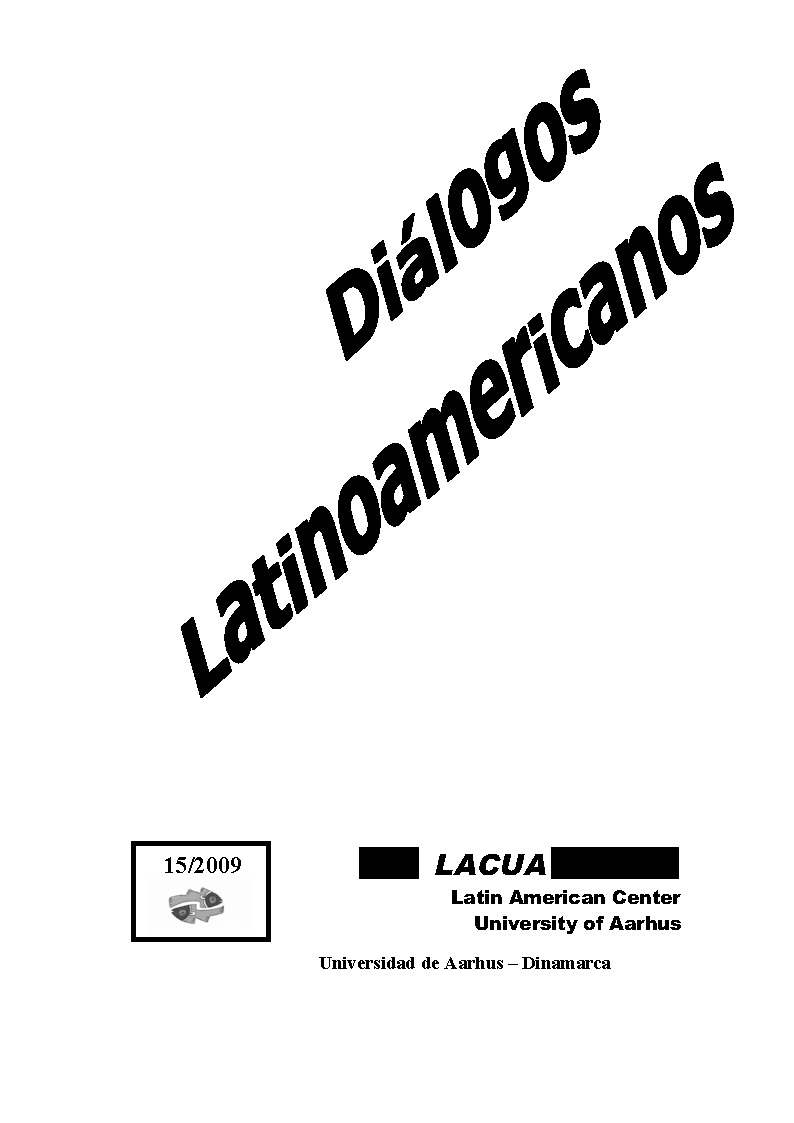Pautas reproductivas de las madres latinoamericanas en Estados Unidos y España a inicios del siglo XXI
DOI:
https://doi.org/10.7146/dl.v10i15.113588Keywords:
fertility, repproductive behavior, international migration, Latin America, Spain, United StatesAbstract
This study aimed to analyze, comparatively, the reproductive
behavior of Latin-American foreign-born women settled in the
two main destination countries of this group: United States and
Spain. The mentioned objective is conducted by an analysis of
the main births and fertility indicators. Considering the
previous works on this topic, these indicators were analyzed in
comparison with the ones of native population in each
destination country, and between both destination countries. In
each case the findings showed differences in the patterns with
regard to intensity and timing, with only partial convergence
of migrants' reproductive patterns to those of the local
population.
References
Planck Institute for Demographic Research 011, 38.
Bledsoe, C. (2004) 'Reproduction at the Margins: Migration and Legitimacy in the New
Europe'. Demographic Research Special Collection 3.
Bledsoe, C., Houle, R. y Sow, P. (2007) 'High Fertility Gambians in Low Fertility
Spain: The Dynamics of Child Accumulation Across Transnational Space'.
Demographic Research 16, 375-412.
Boyd, M. (1989) 'Family and Personal Networks in International Migration: Recent
Developments and New Agendas'. International Migration Review 23, 638-670.
Carter, M. (2000) 'Fertility of Mexican Immigrant Women in the U.S. : A Closer Look'.
Social science quarterly 81, 1073-1086.
Delgado, M. y Zamora, F. (2004) 'Españolas y extranjeras: su aportación a la
fecundidad en España'. Economistas 99, 88-97.
Delgado, M. y Zamora, F. (2006) 'La contribución de las mujeres extranjeras a la
dinámica demográfica en España'. Sistema 190-191, 143-166.
Devolder, D. y Treviño, R. (2007). Efectos de la inmigración extranjera sobre la
evolución de la natalidad y de la fecundidad en España In VIII Congreso de la
Asociación de Demografía HistóricaMaó (Menorca) del 31 de Mayo al 2 de Junio.
Devolder, D. y Treviño, R. (2008) 'Informe sobre las pautas espaciales de fecundidad y
sobre el impacto de la inmigración en la natalidad y la fecundidad: fundamentos para las
hipótesis de proyección', INE.
Ford, K. (1990) 'Duration of Residence in the United States and the Fertility of U.S.
immigrants'. International Migration Review 24, 34–68.
Frank, R. y Heuveline, P. (2005) 'A Crossover in Mexican and Mexican-American
Fertility Rates: Evidence and Explanations for an Emerging Paradox'. Demographic
Research 12, 77-104.
Izquierdo, A. (2006) 'Demografía de los extranjeros. Incidencia en el crecimiento de la
población', en Izquierdo, A. (Ed.) Demografía de los extranjeros. Incidencia en el
crecimiento de la población. Bilbao, 336.
Izquierdo, A. y López, D. (2003) 'El rastro demográfico de la inmigración en España:
1996-2002'. Papeles de economia española nº 98, 68-93.
Kahn, J. R. (1988) 'Immigrant Selectivity and Fertility Adaptation in the United States'.
Social Forces 67, 108-128.
Kahn, J. R. (1994) 'Immigrant and Native Fertility during the 1980s: Adaptation and
Expectations for the Future'. International Migration Review 28, 501-519.
Kuku, H. (2003) 'Migration and Fertility: Competing Hypotheses Re-examined'. Max
Planck Institute for Demographic Research 035, 40.
Lindstrom, D. P. y Giorguli, S. (2007) 'The Interrelationship between Fertility, Family
Maintenance, and Mexico-U.S. Migration'. Demographic Research 17, 821-858.
López, D. (2007). Incidencia de la inmigración latinoamericana en España In V
Congreso sobre la Inmigración en EspañaUniversitat de València y Fundació CEIM,
Valencia 21/24 Marzo de 2007.
López, D. y Villares, M. (2004). Extranjeros en España y su aporte a la natalidad In IV
Congreso sobre la Inmigración en España: Ciudadanía y ParticipaciónUniversitat de
Girona, Girona 10-13 de Noviembre de 2004.
Martin, J. A., Hamilton, B.E., et.al. (2002) National Vital Statistics Report, Vol 50, No.
5; February 12, 2002. Department of Health and Human Services, Center for Disease
Control and Prevention, National Center for Health Statistics and National Vital
Statistics System.
Massey, D. S., Alarcón, R., et.al. (1987) Return to Aztlan. The Social Process of
International Migration from Western México. University of California Press: Berkeley.
Milewski, N. (2007) 'First Child of Immigrant Workers and Their Descendants in West
Germany: Interrelation of Events, Disruption, or Adaptation?' Demographic Research
17, 859-896.
Parrado, E. A. y Morgan, S. P. (2008) 'Intergenerational Fertility among Hispanic
Women: New Evidence of Immigrant Assimilation'.
Passel, J. S. (2005). Estimates of the Size and Characteristics of the Undocumented
Population Pew Hispanic Center, Washington.
Rodriguez Vignoli, J. (2008) ' Reproducción en la Adolescencia en América Latina y el
Caribe: ¿Una Anomalía a Escala Mundial?'. III Congreso de la Asociación
Latinoamericana de Población (ALAP). Córdoba (Argentina), 2008.
Roig, M. y Castro, T. (2005). Immigrant Mothers, Spanish Babies: Fertility Patterns of
Foreign Women in Spain In XXV IUSSP International Population ConferenceTours,
France, 18-23 July 2005.
Roig, M. y Castro, T. (2007) 'Childbearing Patterns of Foreign Women in a New
Immigration Country: The Case of Spain'. Population-E 62, 351-380.
Stephen, E. H. y Bean, F. D. (1992) 'Assimilation, Disruption and the Fertility of
Mexican-Origin Women in the United States'. International Migration Review 26, 67-
88.
Toulemon, L. y Mazuy, M. (2004) 'Comment prendre en compte l’âge à l’arrivée et la
durée de séjour en France dans la mesure de la fécondité des immigrants ?' Documents
de Traval - INED 120.
Downloads
Published
How to Cite
Issue
Section
License
Counting from volume 31 (2022), articles published in Diálogos Latinoamericanos are licensed under CC-BY 4.0. Read more about the license terms here https://creativecommons.org/licenses/by/4.0/.
No Creative Commons license applied on volumes 1-30. All rights reserved by the authors. Readers may download, read, and link to the articles, but they cannot republish the articles.
With the publication of volume 31 (2022), authors retain the full copyright to their articles and give Diálogos Latinoamericanos the right to the first publication. Authors also retain copyright to earlier versions of manuscripts, such as the submitted (pre-print) and the accepted manuscript (post-print).
Copyright to articles published in volumes 1-30 is held by the authors.





